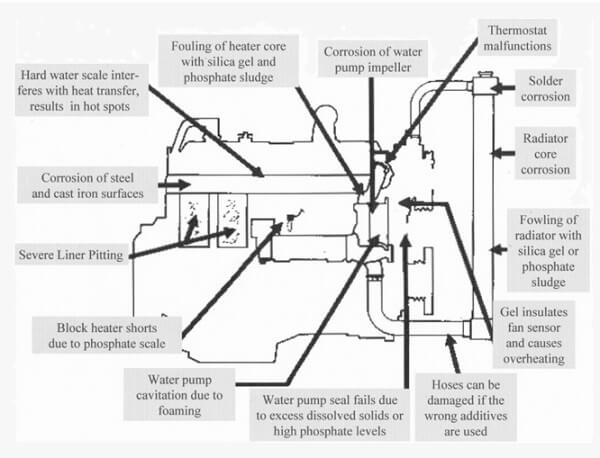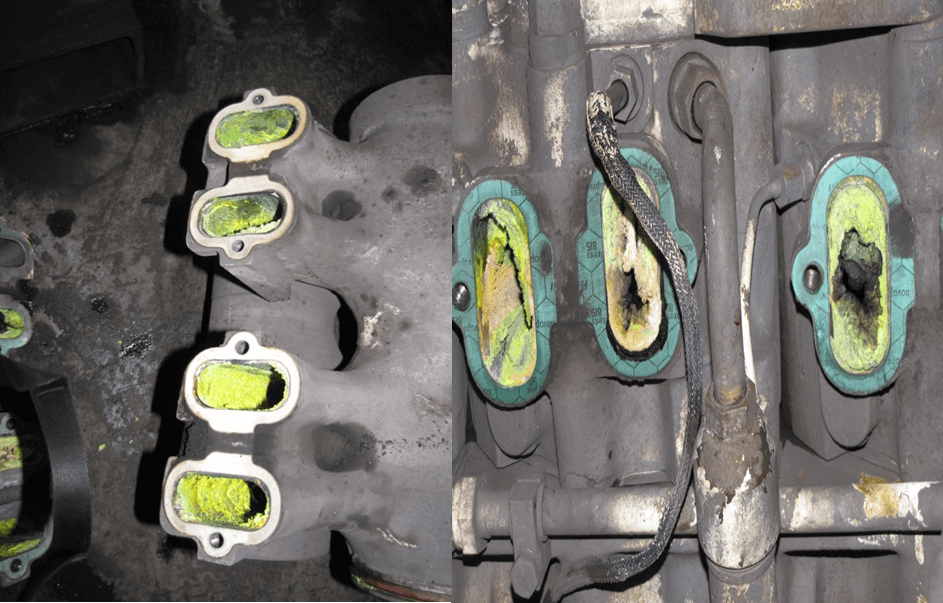by Jeff Walkup
Savvy equipment Owner Operators know that as much as 60% of engine failures are attributed to coolant ingress or a cooling system related issue. One such coolant system issue causing premature engine failure is stray current corrosion.
What is Stray Current Corrosion?
Engine damage due to an electrical current passing through coolant is known as electrolytic or “stray current” corrosion. When an electrical engine component is not properly grounded, the electrical current will search for the path of least resistance. Coolant in the cooling system is often the path followed as it offers less resistance than a poor ground connection. In addition to engine corrosion, this issue can also cause the generation of static electricity elsewhere leading to accelerated rusting of other parts of the equipment.
Effects of Stray Current Corrosion in Engines
The effects of stray current corrosion in engines can be evidenced by:
- Pitted cylinder liners
- Damaged cooling system parts (e.g. radiator)
- Extreme aluminum corrosion
- Abnormal water pump and head gasket failure
The resulting excessive corrosion by-products can stop the flow of coolant through the oil cooler and other related parts. This can cause severe ring and bearing wear due to improperly cooled engine oil. Remember, if viscosity is lubricating oil’s number one property, then heat is its number one enemy. Additionally, stray current corrosion can cause copper to plate out onto iron components causing iron destruction and even cooler core leaching (this would show in oil analysis reports as elemental wear (ppm)). The diagram below depicts what can happen if an engine is not properly treated and monitored for these concerns.

Testing for Stray Current Damage
Many things can be done to address the symptoms, but it’s discovering and correcting the root-cause that matters most to an equipment owner. When it comes to stray current anomalies, the only way it can be stopped is to correct the electrical problem causing the current in the first place. The potential for damage greatly increases as the ability of the coolant to resist carrying an electrical current between different source metals within the cooling systems is increased.
Lab testing coolant can detect the early effects of stray current corrosion in your cooling systems. While coolant/antifreeze normally deteriorates over time, overheating caused by the effects of stray current corrosion accelerates the deterioration. Testing determines if your coolant has the right chemical balance for maximum protection and cooling efficiency. Coolant testing also assesses the correct usage, condition, adequate freeze/boil protection and for contamination.
Below is a real world example of an engine failure related to stray current corrosion at a mining company. It was hard to believe this engine operated as long as it did. Coolant analysis detected the issues early and alerts sent indicating immediate intervention was needed. Unfortunately, preventive measures were not immediately taken and this was the result.

Fluid Life Can Help!
Fluid Life has a variety of coolant testing options at your disposal. When in doubt, contact your trusted Fluid Life representative to assist you. Coolant testing and analysis is a complex but worthwhile undertaking that cannot be understated. Navigating this maze starts off with being well educated, informed and working with a solid partner.
Your success is our success, so think BIG!